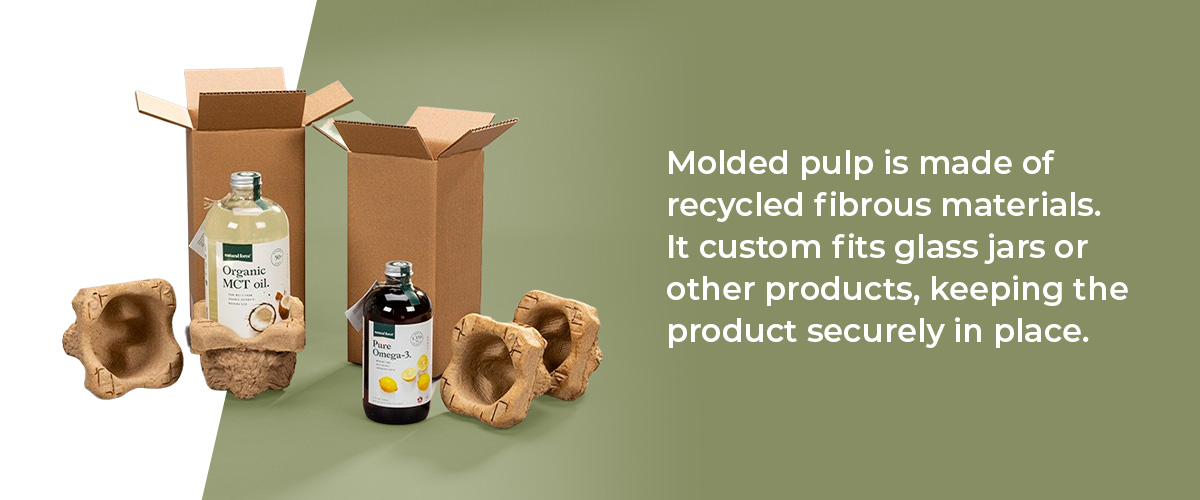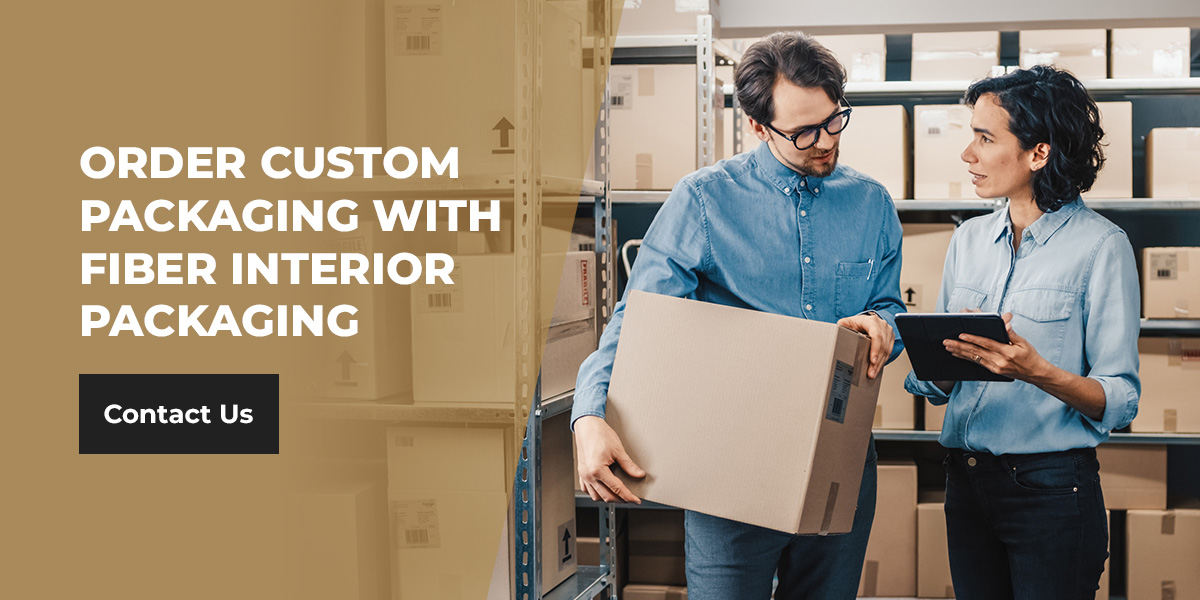
You can ship many types of products without using heavy packaging, but glass is fragile and can present unique challenges.
Even when properly labeled as fragile, packages sometimes experience turbulent transportation and rough loading or unloading, so it’s important to use the right packaging. Protect glass during shipping with reliable packaging.
Table of Contents
- Tips for Protecting Glass During Transit
- Limit Empty Space
- Use Sturdy Boxes
- Use a Custom Packaging Solution
- Test Your Packaging
- The Best Materials for Shipping Glass Items
- Sturdy Packing Tape
- Fitted Boxes
- Wrapping Paper
- Packing Peanuts
- Bubble Wrap
- Molded Pulp
- How To Package Glass Jars for Shipping
- How To Pack Your Boxes
Tips for Protecting Glass During Transit
Here are common ways to package glass jars and other glass products for all your shipping needs:
1. Limit Empty Space
It’s easy for glass to move around and break when your packaging has a lot of empty space. Ensure the size of the packaging is appropriate for your glass products — the tighter the fit, the better. You can adjust the amount of space by using smaller boxes or more packaging materials.
2. Use Sturdy Boxes
Boxes go through a lot of movement during shipping. If your cardboard boxes are thin and flimsy, the condition of your products may be affected. When selecting your packaging, you’ll also want to consider the weather elements your boxes will be exposed to. If there is a high risk of your boxes getting wet without the necessary protection, they will become weaker and more prone to breaking apart.
3. Use Custom Solutions
Using shipping containers that are designed specifically for your products is one of the best possible solutions for transporting glass products. Custom boxes are designed to fit your specific product, so you know the glass items are secure. Choose packaging that cradles your fragile items, preventing them from rattling around inside your shipping boxes.
4. Test Your Packaging
Testing your packaging allows you to see how it will arrive to the end user. Checking for potential issues is important when you first start shipping out products on a large scale or if you plan to change your shipping materials. When you test the packaging before use, you can investigate what might influence the condition of your items. Great Northern Fiber Interior Packaging™ offers testing services, so you can ensure your packaging holds up to the demands of transportation.
The Best Materials for Shipping Glass Items
These are some of the best possible packing items you can get for wrapping and shipping glass jars and other glassware safely:
1. Packing Tape
Packing tape is generally a required material to properly tape a box packaging.
The pros of using packing tape:
- The items will be protected from falling out of the packaging during transit
- This material makes the packages more tamper-proof
- The tape is waterproof and seals the seams of the package from moisture
The cons of using packing tape:
- It takes more time to apply packing tape in the boxing process
- It will take customers longer to open their items
2. Fitted Boxes
This type of item is a good choice for ensuring a tight fit.
The pros of using fitted boxes:
- The amount of empty space is efficiently restricted
- They can be nested
The cons of using fitted boxes:
- Finding the perfect fit can be difficult unless the packaging is customized for a specific item
- They are more expensive
3. Wrapping Paper
Wrapping paper can easily be used with other cushioning materials.
The pros of using wrapping paper:
- It’s biodegradable
- It can be recycled and reused
- It’s cost-effective
The cons of using wrapping paper:
- It’s a thin material, so it typically has to be used with other types of packing
- It cannot absorb shock
4. Packing Peanuts
Packing peanuts are often used for transporting fragile items.
The pros of using packing peanuts:
- They absorb shock
- They are lightweight
The cons of using packing peanuts:
- This material is less eco-friendly than other options
- The peanuts are difficult to dispose of properly
5. Bubble Wrap
Bubble wrap or air pillows are a plastic wrap with air pockets and provides suitable protection for glass items.
The pros of using bubble wrap:
- This material is lightweight
- The bubbles are a superior design that diminishes contact damage
- This material has high versatility when shipping
The cons of using bubble wrap:
- Wrapping each individual item and then taping it is a time-consuming process
- Bubble wrap is a plastic material, making it less environmentally friendly
- It is more difficult for end users to dispose of
6. Molded Pulp
Molded pulp is made of recycled fibrous materials.
The pros of using molded pulp:
- It custom fits glass jars or other products, keeping the product securely in place
- It is easy to recycle and dispose of
- It is biodegradable
- The drop-and-go design makes an easy-to-package product
The cons of using molded pulp:
- It can be more expensive
- It requires a supply of recycled materials
How to Package Glass Jars for Shipping
After you select wrapping materials that will fit your glass jars, make sure you take the necessary steps during the packaging process:
-
- Use biodegradable molded pulp pads to keep your fragile jars securely in place.
- When not using molded pulp pads, seal any liquids inside a plastic bag before wrapping the items in an outer layer. This keeps the liquids inside and prevents leaking while products are in transit.
- Insert dividers when shipping multiple jars together in one box. Separating your products helps hold them snugly in place while preventing them from bumping into or rubbing against one another.
How to Pack Your Boxes
Once you have your glass items wrapped, you’ll want to fill your boxes with about 3 inches of packing material, unless you’re using an efficient packing material from Fiber Interior Packaging to help you save time. If you’re using molded pulp or a fitted box, you’ll need less packing material. Secure the products, label them for tracking purposes and then place them inside the shipping boxes.
Use an appropriate amount of packing inside your shipping boxes, ensuring that the products will stay mostly in place during the shipping process. Tape the boxes shut so they cannot move, and use the right kind of packing tape. You want to avoid using more tape than needed, but you also want to ensure the tape stays secure because glass items could break if they fall out of the box. Taping the seams is an especially good idea if the glass is heavy.
Order Custom Packing With Fiber Interior Packaging
When it comes to shipping glass, packaging from Fiber Interior Packaging is the ultimate solution. They are tailored to fit your products, and are an affordable sustainable alternative to other types of packaging. Using our products is quick, easy and effective which will help you save on labor costs. Contact us to get started today or give us a call at 800.925.2626.







